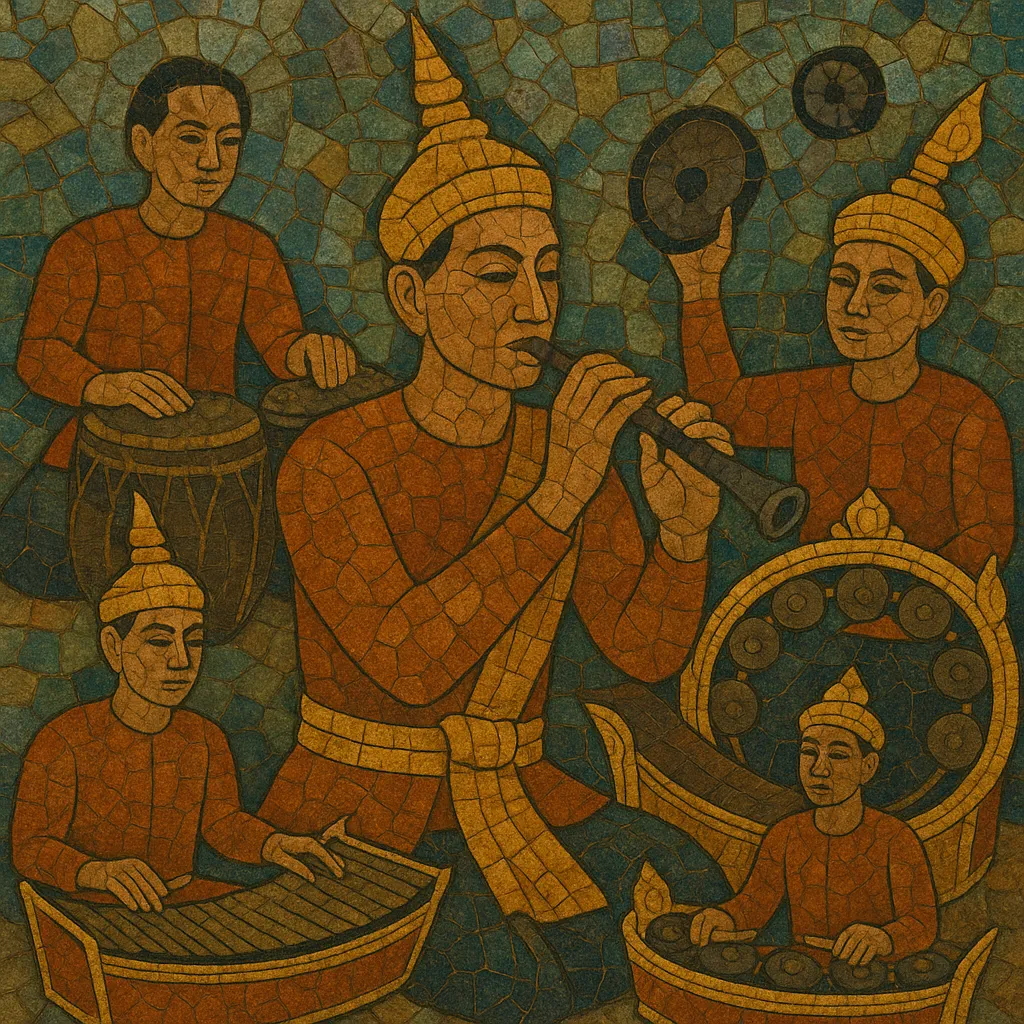Pinpeat (pin peat) is the ceremonial Khmer court and temple orchestra of Cambodia. It accompanies royal dance (Robam), masked theater (Lakhon Khol), shadow puppetry (Sbek Thom), and Brahmanic–Buddhist rituals.
The ensemble typically includes the sralai (a penetrating quadruple-reed oboe), roneat ek and roneat thung (high and low xylophones), kong vong toch and kong vong thom (small and large circular sets of bossed gongs), sampho (barrel drum), skor thom (pair of large drums), chhing (small hand cymbals), and chap (crash cymbals). Its texture is a vivid heterophony, in which instruments elaborate the same melody at different densities, while gongs articulate cyclical time and chhing mark the metric framework.
Pinpeat uses non-tempered modal systems characteristic of mainland Southeast Asia, emphasizing timbral blend, cyclical form, and controlled acceleration. The result is a brilliant, ceremonial sound designed to animate sacred space, frame ritual action, and drive dance narratives.
Archaeological and iconographic evidence (inscriptions and bas‑reliefs from Angkor, 9th–15th centuries) show gong‑chime and reed oboe ensembles at the Khmer court and temples. These ensembles crystallized into what is now called pinpeat, serving state ritual and the performing arts linked to Hindu‑Buddhist cosmology.
By the high Angkorian period, the orchestra’s instrumentation and functions were largely established: the sralai led melodic contour, roneat and kong vong elaborated the main melody in heterophony, and drums with chhing controlled pacing and cadential points. Pinpeat aligned with royal patronage, temple festivals, and narrative dance/theater.
Centuries of interaction with neighboring courts (Ayutthaya/Siam, Lan Xang/Laos, and Mon polities) produced shared gong‑chime aesthetics and reciprocal influence. Khmer court models and musicians circulated regionally, while cross‑border exchange also fed back into Cambodia, yielding cognate ensemble types and overlapping repertoires across mainland Southeast Asia.
Colonial‑era scholars and early recordings began to document pinpeat structure, modes, and dance/theater functions. National conservatories in Phnom Penh formalized training and ensured continuity of palace and temple repertories.
The Khmer Rouge period severely disrupted musical life, with catastrophic losses of master musicians and instruments. After 1979, surviving masters, cultural institutions, and diaspora communities undertook major revival efforts—rebuilding ensembles, retraining players, and reestablishing pinpeat for the Royal Ballet, Lakhon Khol, and shadow theater performances.
Today pinpeat thrives in court/official ceremonies, pagoda festivals, state ensembles, and educational institutions. It is recognized as a core emblem of Khmer intangible heritage, with renewed instrument making, pedagogy, and international touring reaffirming its ceremonial and artistic centrality.


